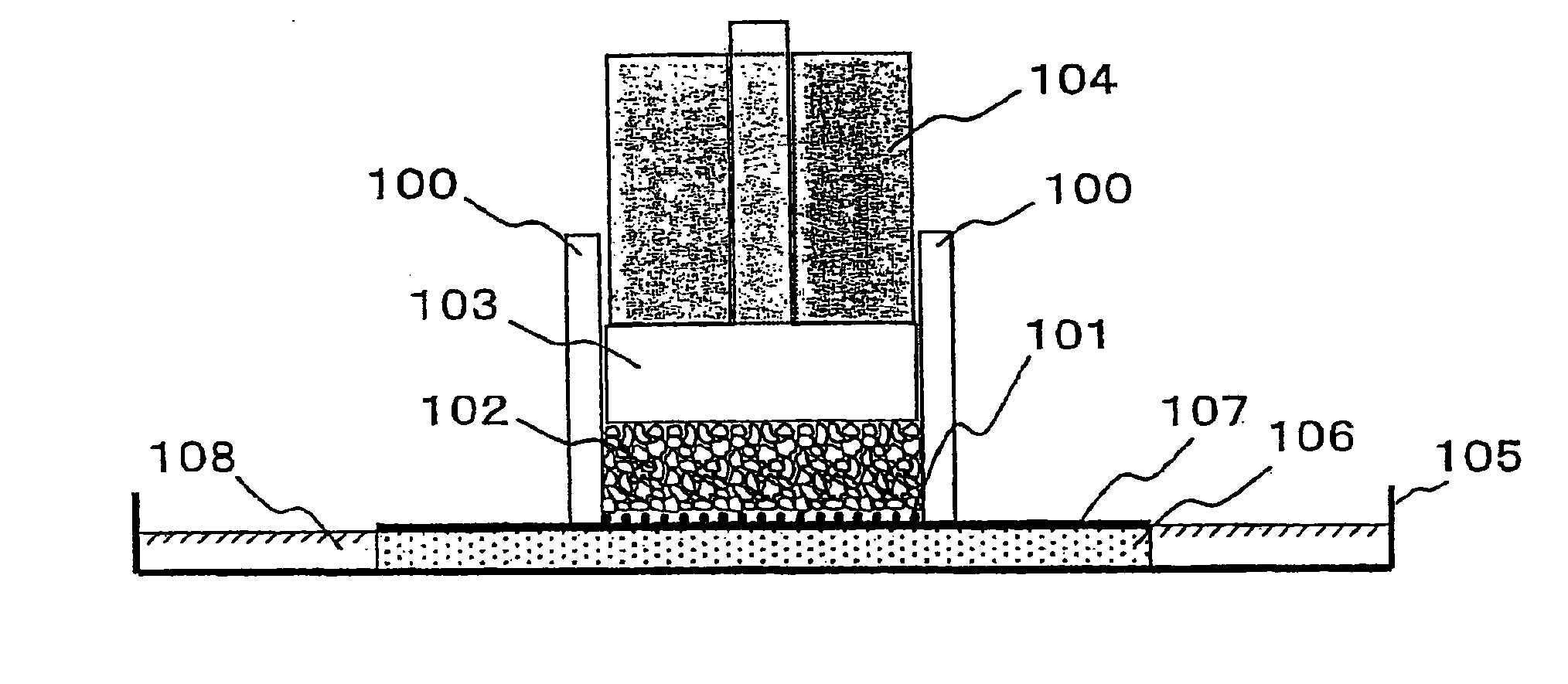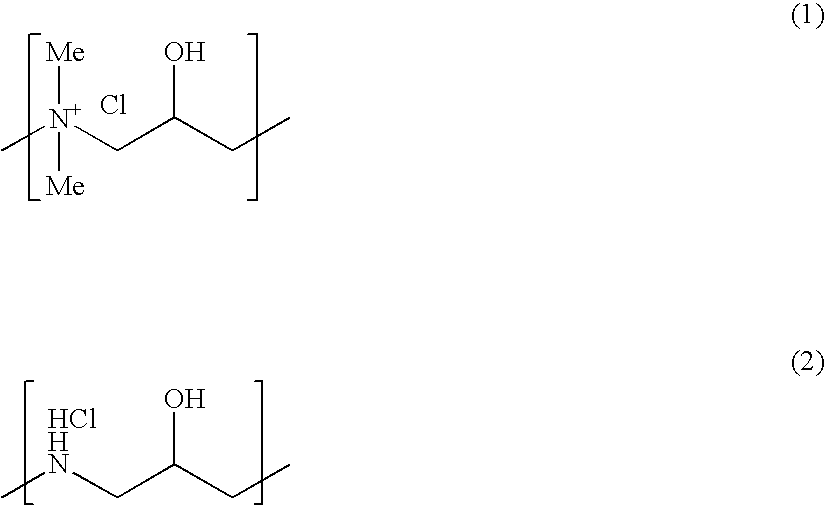Water absorbing agent and production method thereof
a technology production method, which is applied in the field of water absorbing agent, can solve the problems of reducing the absorbing amount or leakage of fluid, reducing the balance between them, and difficulty in improving the relationship (balance) between them to a successful level, and achieves excellent fluid absorbing speed and high safety
- Summary
- Abstract
- Description
- Claims
- Application Information
AI Technical Summary
Benefits of technology
Problems solved by technology
Method used
Image
Examples
synthesis example 1
[0356]90.2 g of dimethylamine aqueous solution (50%), 6.8 g of ammonia water (25%), and 172.6 g of water were put into a reactor that is equipped with a stirring device, a reflux condenser, a dropping funnel, and a thermometer. The mixture was stirred so as to be evenly dissolved, and thereafter 101.8 g of epichlorohydrin was dropped to the mixture through the dropping funnel over approximately 3 hours. After the dropping, the resultant product was reacted at 80° C. for 6 hours, thereby obtaining a colorless-light yellow aqueous solution that had a resin content of 39%. A weight-average molecular weight of the resultant polymer, which was measured with use of GPC (Gel Permeation Chromatography), was 20,000.
synthesis example 2
[0357]90.2 g of dimethylamine aqueous solution (50%), 34.0 g of ammonia water (25%), and 217.9 g of water were put into a reactor that is equipped with a stirring device, a reflux condenser, a dropping funnel, and a thermometer. The mixture was stirred so as to be evenly dissolved, and thereafter 138.8 g of epichlorohydrin was dropped to the mixture through the dropping funnel over approximately 3 hours. After the dropping, the resultant product was reacted at 80° C. for 8 hours, thereby obtaining a colorless-light yellow aqueous solution that had a resin content of 39%. A weight-average molecular weight of the resultant polymer, which was measured with use of GPC, was 25,000.
synthesis example 3
[0358]90.2 g of dimethylamine aqueous solution (50%), 68 g of ammonia water (25%), and 2746 g of water were put into a reactor that is equipped with a stirring device, a reflux condenser, a dropping funnel, and a thermometer. The mixture was stirred so as to be evenly dissolved, and thereafter 185 g of epichlorohydrin was dropped to the mixture through the dropping funnel over approximately 3 hours. After the dropping, the resultant product was reacted at 80° C. for 10 hours, thereby obtaining a colorless-light yellow aqueous solution that had a resin content of 39%. A weight-average molecular weight of the resultant polymer, which was measured with use of GPC, was 30,000.
PUM
| Property | Measurement | Unit |
|---|---|---|
| weight-average molecular weight | aaaaa | aaaaa |
| weight-average molecular weight | aaaaa | aaaaa |
| mass % | aaaaa | aaaaa |
Abstract
Description
Claims
Application Information
 Login to View More
Login to View More - R&D
- Intellectual Property
- Life Sciences
- Materials
- Tech Scout
- Unparalleled Data Quality
- Higher Quality Content
- 60% Fewer Hallucinations
Browse by: Latest US Patents, China's latest patents, Technical Efficacy Thesaurus, Application Domain, Technology Topic, Popular Technical Reports.
© 2025 PatSnap. All rights reserved.Legal|Privacy policy|Modern Slavery Act Transparency Statement|Sitemap|About US| Contact US: help@patsnap.com



